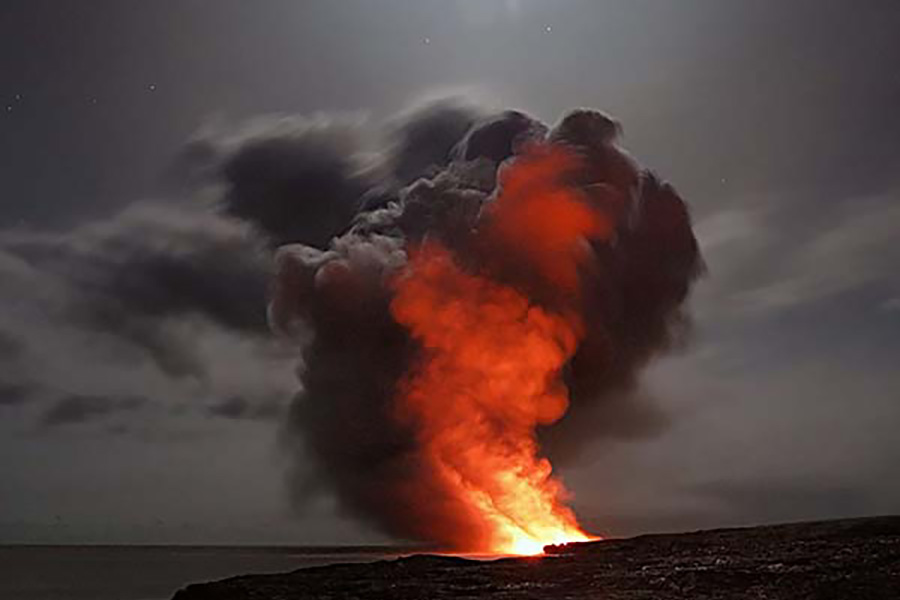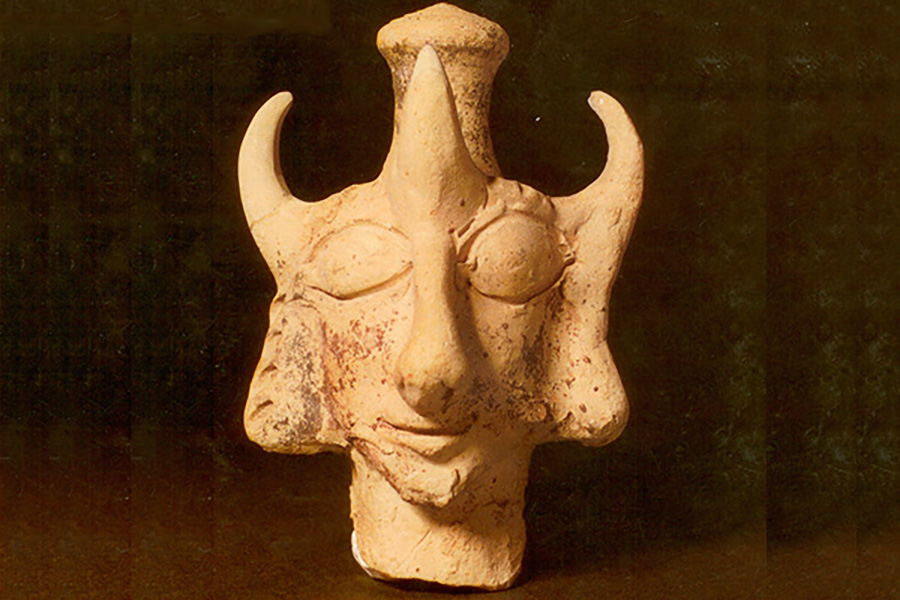The word Yahauah (𐤉𐤄𐤅𐤄) means “He who creates mischief” and is the contested proper name of the alah of Yasharaal, transliterated from the Tetragrammaton.
The Paleo-Hebrew language or the original language of the Ābarayam is one spoken with an emphasis on the rauakh (breath, wind, spirit). With the language of the Ābarayam, each letter has a meaning and a number associated with it that adds meaning to each word they’re used with. Below you will be able to learn more about the letter in Ancient Hebrew, Yiddish Hebrew, Greek, and much more.
Letter Meanings
| Letter | Meaning |
|---|---|
| 𐤉 (y) – ya | Arm, hand, work, thrust, deed, make, throw, worship Prefix: he/she, turns a word third person |
| 𐤄 (h) – ha | Look, Behold, The, Reveal, breath (life), man |
| 𐤅 (u) – ua [ýa] | Nail, tent peg, hook, to secure, connect, Messiah |
| 𐤄 (h) – ha | Look, Behold, The, Reveal, breath (life), man Suffix: to, toward, in the direction of, -ward, her, feminine form, it |
| Ābarayat Number | 30 = 10 (y) + 5 (h) + 6 (u) + 5 (h) |
| Hebrew Gematria | 619 = 400 (y) + 1 (a) + 8 (h) + 1 (a) + 200 (u) + 1 (a) + 8 (h) |
| English Gematria | 390 = 150 (y) + 6 (a) + 48 (h) + 6 (a) + 126 (u) + 6 (a) + 48 (h) |
| Simple Gematria | 65 = 25 (y) + 1 (a) + 8 (h) + 1 (a) + 21 (u) + 1 (a) + 8 (h) |
Based on the meaning of the letters the word could be defined as:
- “He beholds a connection of man”
- “He beholds a connection of breath (life)”
- “He reveals a Messiah of breath (life)”
- “He breath (life) to connect man”
- “He breath (life) to connect breath (life)”
- “Worship to reveal Messiah of man”
- “Worship to reveal Messiah of breath (life)”
- Combines Yah and Hauah
- Combines Yah and Uah
Definitions for 𐤉𐤄𐤅𐤄 / Yahauah
| Language | Word | Transliteration | Pronunciation | Definition |
|---|---|---|---|---|
| Ābarayat | 𐤉𐤄𐤅𐤄 | Yahauah | Yaw-oo-aw | the proper name of the Alah of Yasharaal [contested]. |
| English | YaHWeH | Yahweh | yah-we | a name of God, transliterated by scholars from the Tetragrammaton. |
| Hebrew | יְהוָֹה | YHVH | yeh-ho-vaw’ | the proper name of the God of Israel |
| Arabic | رب | rabi | ra-bi | Allah, god, lord, to collect, to raise |
| Greek | Ιεχωβά | Iechova | ek-ov-aw | Jehovah |
Images for 𐤉𐤄𐤅𐤄 / Yahauah



Alternative Spellings
Due to possible mistranslations of the word an alternative spelling of the word is:
Speculated Etymology
The Tetragrammaton is not attested other than among the Israelites and seems not to have any plausible etymology. The Ābaray scriptures explain it by the formula “Ehye ašer ehye” (“I Am that I Am”), the name of The Most High revealed to 𐤌𐤔𐤄 (Mashah) in 𐤔𐤌𐤅𐤕 (Shamauat) 3:14. This would frame Y-H-W-H as a derivation from the Ābaray triconsonantal root 𐤄𐤉𐤄 (h-y-h), “to be, become, come to pass”, with a third person masculine y- prefix, equivalent to English “he”, thereby affording translations as “he who causes to exist”, “he who is”, etc.
Although this would elicit the form Y-H-Y-H (𐤉𐤄𐤉𐤄), not Y-H-W-H. To rectify this, some scholars proposed that the Tetragrammaton represents a substitution of the medial y for w, an occasionally attested practice in Biblical Hebrew as both letters represented matres lectionis; others proposed that the Tetragrammaton derived instead from the triconsonantal root 𐤄𐤅𐤄 (h-u-h), “to be, constitute”, with the final form eliciting similar translations as those derived from h-y-h.
Modern scholars, however, consider “Ehye ašer ehye” to be a folk etymology; a later theological gloss invented at a time when the original meaning of the Tetragrammaton had been forgotten.
Ancient Egypt: Iah (Yah) and Heh (Huah)
Some speculation has been made that the word Yahauah is a combination of the words Yah and Huah or Iah and Heh in the Egyptian Coptic language.
Ancient Egypt: Iah (Yah)
Iah is an Ancient Egyptian lunar deity whose name is written in Coptic as ⲟⲟϩ (jꜥḥ). The word ⲟⲟϩ (jꜥḥ) simply means “Moon”. It is also transcribed as Yah, Jah, or Aah. By the New Kingdom (16th century to 11th century BC) he was less prominent than other gods with lunar connections, Thoth and Khonsu. As a result of the functional connection between them, he could be identified with either of those deities.
Iah was sometimes considered an adult form of Khonsu and was increasingly absorbed by him. He continued to appear in amulets and occasional other representations, similar to Khonsu in appearance, with the same lunar symbols on his head and occasionally the same tight garments. He differed in usually wearing a full wig instead of a child’s sidelock, and sometimes the Atef topped by another symbol.
As time went on, Iah also became Iah-Djehuty, meaning “god of the new moon”. In this role, he assumed the lunar aspect of Thoth (also known as Djehuty), who was the god of knowledge, writing, and calculation. The segments of the moon were also used as fractional symbols in writing.
Iah was also assimilated with Osiris, god of the dead, perhaps because, in its monthly cycle, the Moon appears to renew itself.
Ancient Egypt: Heh (Huah)
Ḥeḥ (ḥḥ, also Huh, Hah, Hauh, Huah, and Hehu) was the personification of infinity or eternity in the Ogdoad in ancient Egyptian religion. His name originally meant “flood”, referring to the watery chaos that the Egyptians believed existed before the creation of the world. The Egyptians envisioned this chaos as infinite, in contrast with the finite created world, so Heh personified this aspect of the primordial waters. Heh’s female counterpart was known as Hauhet, which is simply the feminine form of his name.
Like the other concepts in the Ogdoad, his male form was often depicted as a frog, or a frog-headed human, and his female form as a snake or snake-headed human. The frog head symbolized fertility, creation, and regeneration, and was also possessed by the other Ogdoad males Kek, Amun, and Nun. The other common representation depicts him crouching, holding a palm stem in each hand (or just one), sometimes with a palm stem in his hair, as palm stems represented long life to the Egyptians, the years being represented by notches on it.
Depictions of this form also had a shen ring at the base of each palm stem, which represented infinity. Depictions of Heh were also used in hieroglyphs to represent one million, which was essentially considered equivalent to infinity in Ancient Egyptian mathematics. Thus this deity is also known as the “god of millions of years”.
The primary meaning of the Egyptian word ḥeḥ was “million” or “millions”; a personification of this concept, Ḥeḥ, was adopted as the Egyptian god of infinity. With his female counterpart Ḥauḥet (or Ḥeḥut), Ḥeḥ represented one of the four god-goddess pairs comprising the Ogdoad, a pantheon of eight primeval deities whose worship was centered at Hermopolis Magna. The mythology of the Ogdoad describes its eight members, Heh and Hauhet, Nu and Naunet, Amun and Amaunet, and Kuk and Kauket, coming together in the cataclysmic event that gives rise to the sun (and its deific personification, Atum).
Definitions for 𐤉𐤄𐤅𐤄𐤉 / yahauahay
When adding the 𐤉 (yad) to the end of a word, it creates a possessive of the original word. It can either signify “my…” or identify a member of a nation. For example, 𐤏𐤁𐤓 (Ābar) is the progenitor, but 𐤏𐤁𐤓𐤉 (Ābaray) is the singular descendant of him also known as a Hebrew.
| Language | Word | Transliteration | Pronunciation | Definition |
|---|---|---|---|---|
| Ābarayat | 𐤉𐤄𐤅𐤄𐤉 | yahauahay | yaw-oo-hey | Yehohi |
| English | ||||
| Hebrew | ||||
| Arabic | ||||
| Greek |
Images for 𐤉𐤄𐤅𐤄𐤉 / yahauahay


Definitions for 𐤉𐤄𐤅𐤄𐤉𐤌 / yahauahayam
When adding the 𐤌 (mayam) after the 𐤉 (yad) to the end of a word, it creates a plural of the original word. It can identify multiple members of a nation. For example, 𐤏𐤁𐤓 (Ābar) is the progenitor, but 𐤏𐤁𐤓𐤉𐤌 (Ābarayam) are the plural descendants of him also known as Hebrews.
| Language | Word | Transliteration | Pronunciation | Definition |
|---|---|---|---|---|
| Ābarayat | 𐤉𐤄𐤅𐤄𐤉𐤌 | yahauahayam | yaw-oo-yawm | Jehoheim |
| English | ||||
| Hebrew | ||||
| Arabic | ||||
| Greek |
Images for 𐤉𐤄𐤅𐤄𐤉𐤌 / yahauahayam


Definitions for 𐤉𐤄𐤅𐤄𐤉𐤕 / yahauahayat
When adding the 𐤕 (tau) after the 𐤉 (yad) to the end of a word, it creates a plural of the original word. It identifies the language or a sign of a nation’s existence. For example, 𐤏𐤁𐤓 (Ābar) is the progenitor, but 𐤏𐤁𐤓𐤉𐤕 (Ābarayat) is the language of him also known as Paleo-Hebrew language.
| Language | Word | Transliteration | Pronunciation | Definition |
|---|---|---|---|---|
| Ābarayat | 𐤉𐤄𐤅𐤄𐤉𐤕 | yahauahayat | yaw-yaw-yawt | Jehovah |
| English | Jehovah | Jehovah | ji-hoh-vuh | a name of God in the Old Testament, a rendering of the ineffable name, JHVH, in the Hebrew Scriptures. |
| Hebrew | ||||
| Arabic | ||||
| Greek |
Images for 𐤉𐤄𐤅𐤄𐤉𐤕 / yahauahayat


Classification
You can continue your studies of the words by viewing Strong’s entries for:



